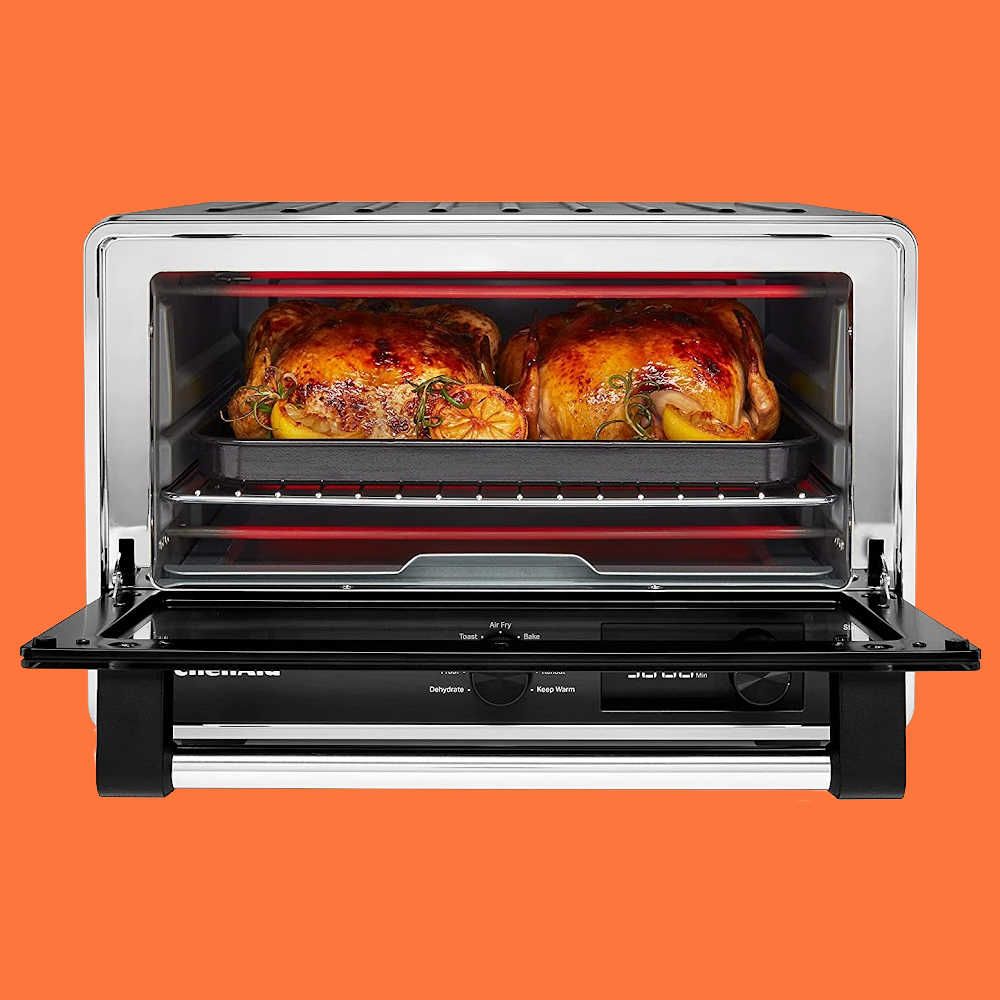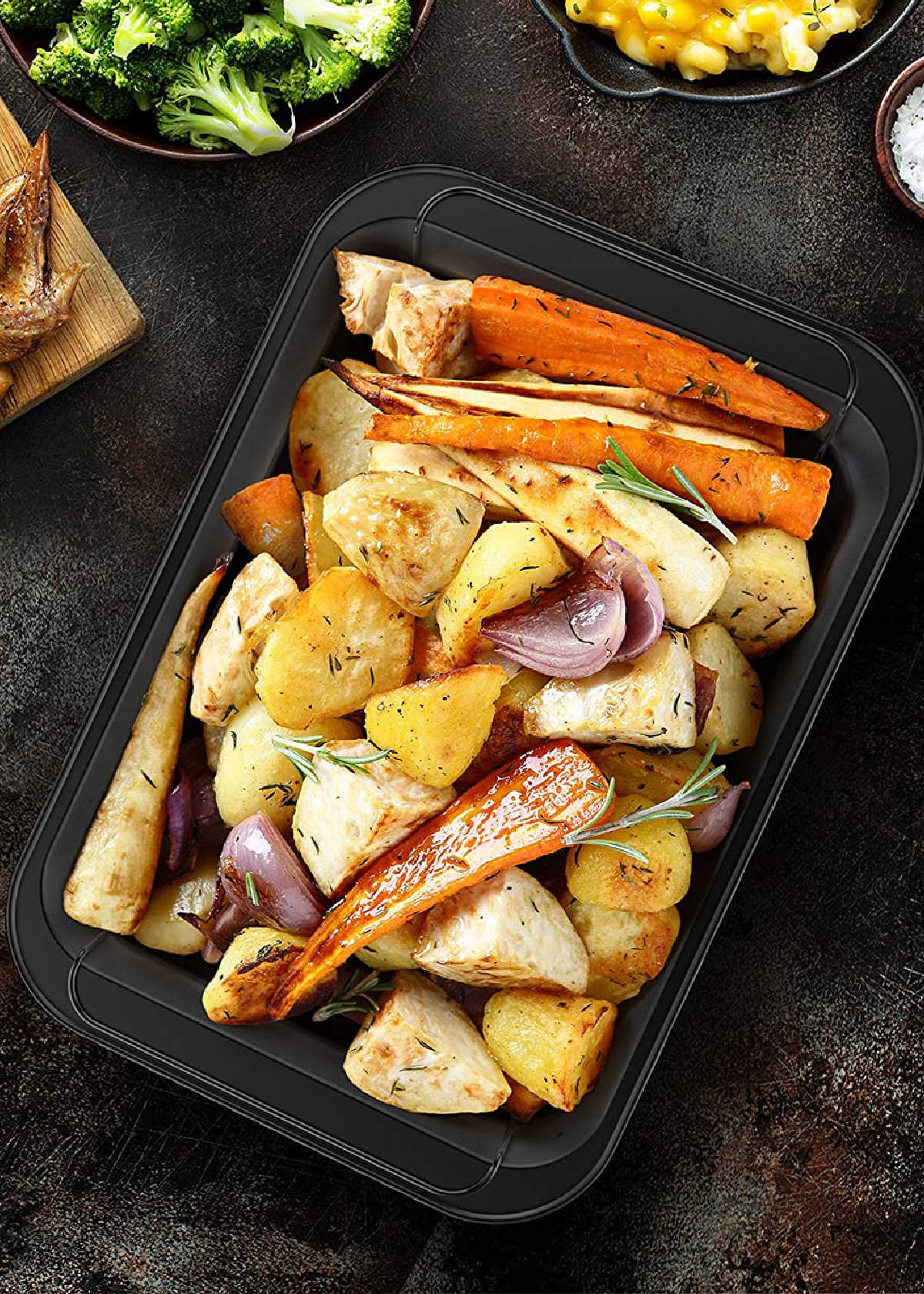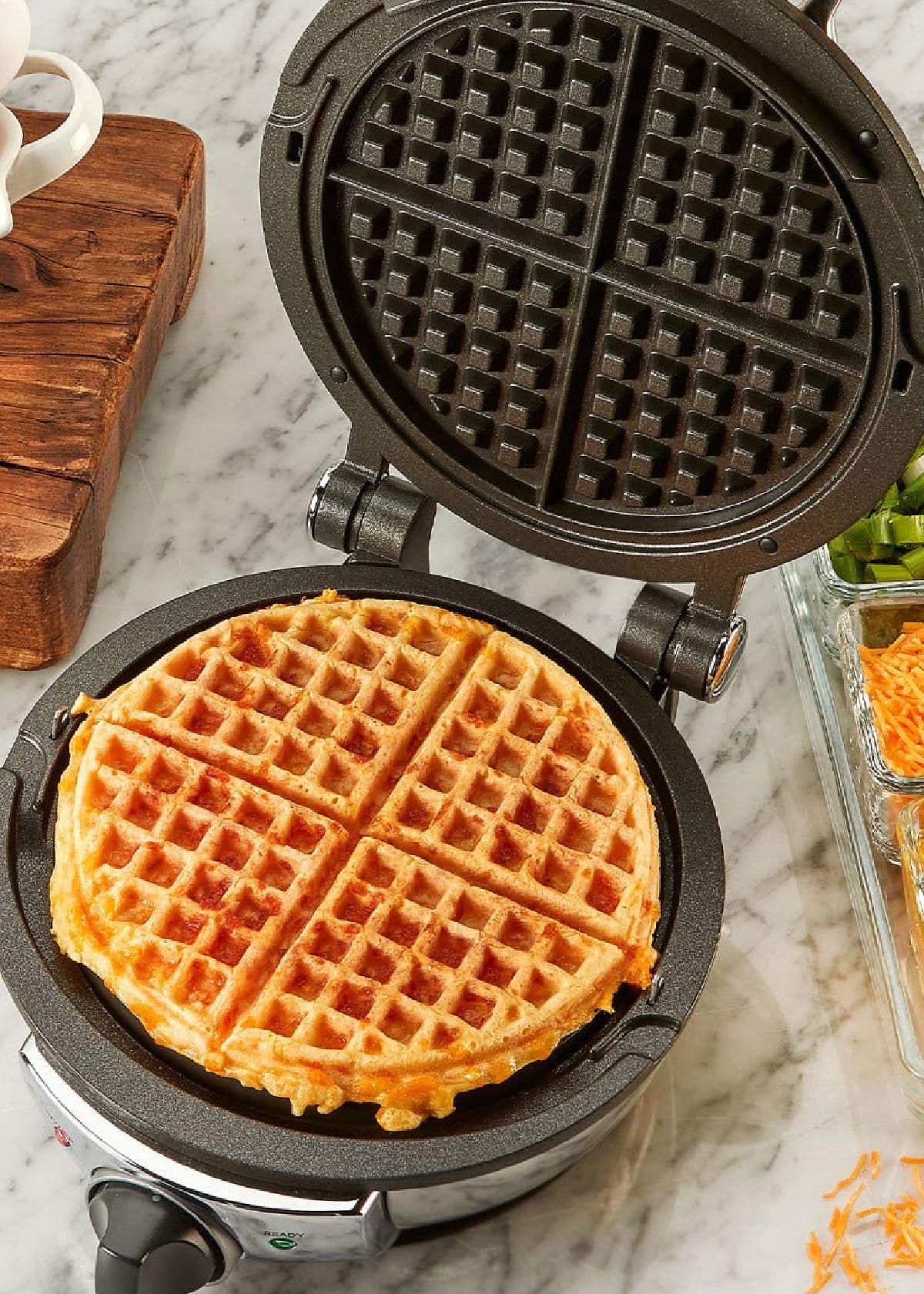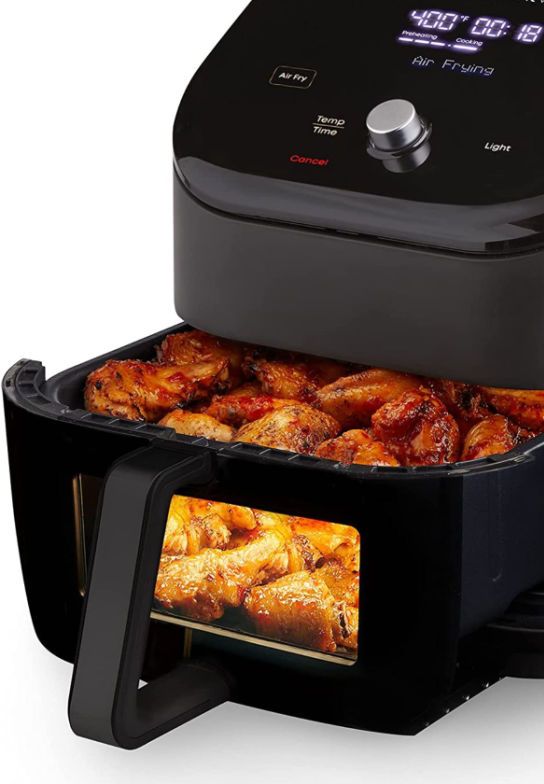Content Summary
A mini fridge may be small in size, but it still employs the same technology and process of refrigeration as a full-sized refrigerator. It's necessary to understand how a mini fridge works, especially if you're in the market for a new one.
In this guide, we’ll dive deep into the process of refrigeration and the different components that make a mini refrigerator function. Knowing the differences between compressor and thermoelectric models can help you choose the best one that suits your needs and budget.


How A Mini Fridge Works
1. The Process Of Refrigeration
Refrigeration is the process that enables the fridge to operate at specific temperature ranges.
- The main function of a mini fridge is to remove heat from the inside and transfer it outside, making the temperature inside the unit cooler.
- It involves four major components: a compressor, condenser, expansion valve, and evaporator. These components work together in a continuous cycle to keep your mini fridge cool.
- The process starts by compressing a low-pressure gas into a high-pressure gas and then converting it into a liquid state.
- The liquid refrigerant (fluid) then passes through the evaporator coils, where it absorbs the heat and cools the air inside the fridge.
- The cooled air is circulated inside the fridge, thereby reducing the temperature.
2. The Role Of The Condenser & Evaporator Coils
- The condenser coils are responsible for discharging the heat from the refrigerant gas.
- They are located at the outer part of the fridge and dissipate heat to the surrounding air.
- The evaporator coils are located inside the fridge and are responsible for absorbing the heat and cooling the air inside the fridge.
- The refrigerant liquid is metered using an expansion valve between the evaporator and the compressor, which reduces the pressure of the liquid refrigerant.
3. Additional Features Of Mini Fridges
- Mini refrigerators come with multiple features that enhance their functionality, convenience, and safety.
- For instance, most mini fridges come with a thermostat that allows you to adjust the fridge's temperature according to your preference.
- Not all mini fridges have a small freezer. Those that have one usually come with a defrost feature that prevents ice buildup in the freezer compartment.
- Its modest size makes this an easily portable fridge.
- Modern mini fridges - in particular, the wine fridge models - have LED lights and glass doors that enhance the fridge's aesthetic value.
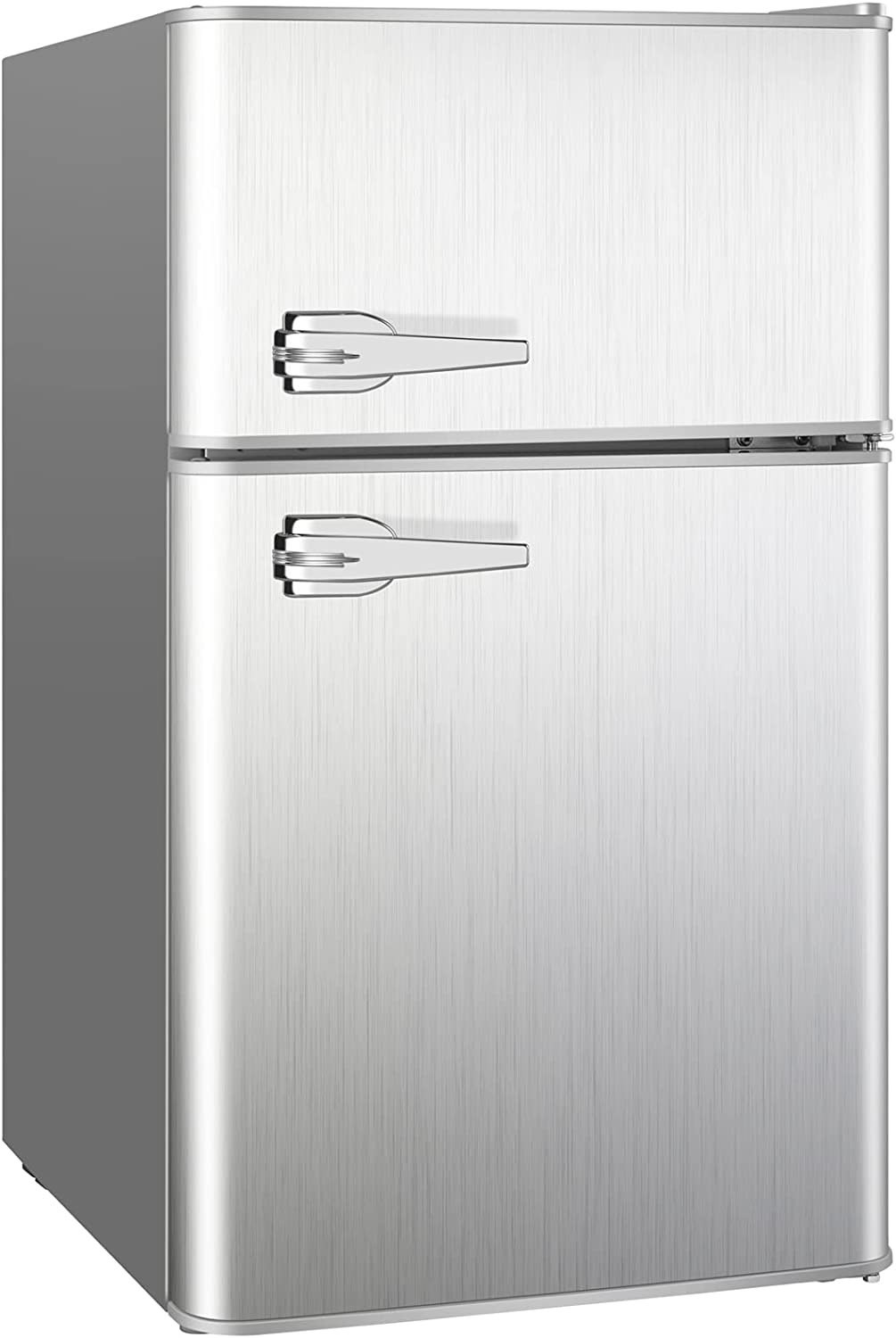
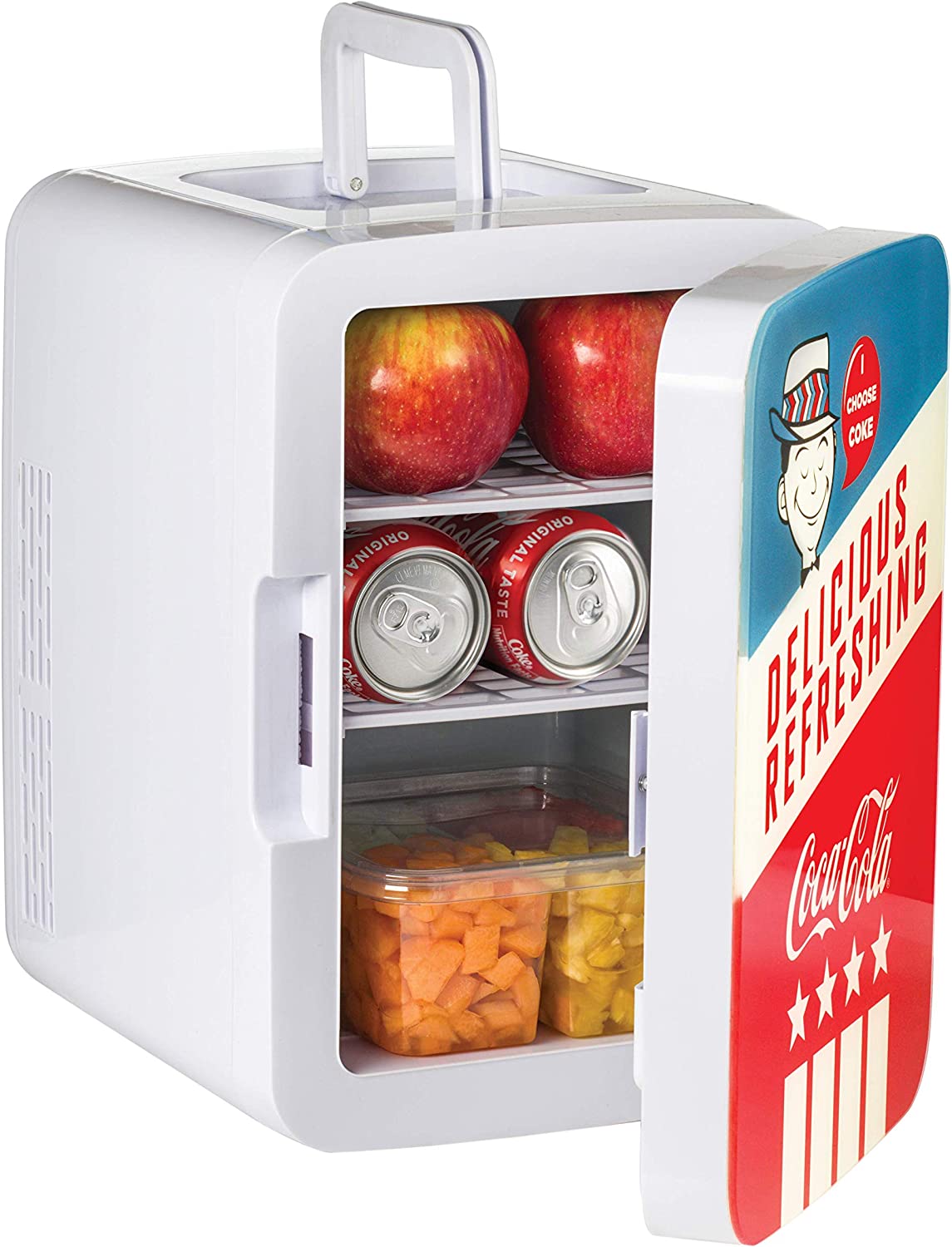
Compressor Fridge vs. Thermoelectric Fridge
1. The Compressor Fridge
- A compressor fridge uses a mechanical compressor to circulate refrigerant gas and compresses it into a liquid, which then moves to the condenser.
- The condenser dissipates the heat and turns the liquid into a low-pressure gas.
- The gas then flows through the expansion valve, where it turns back into a low-pressure liquid and enters the evaporator, where it absorbs heat from the inside of the fridge.
- The compressor also has a thermostat that maintains the temperature inside the fridge by turning the compressor on and off. Compressor fridges are more efficient and can freeze food as well.
2. The Thermoelectric Fridge
- A thermoelectric fridge uses electrical cooling technology to cool the air inside the fridge.
- They work by using the Peltier effect, whereby an electrical current is passed through a semiconductor, causing one side to cool and the other to heat up.
- These fridges have no moving parts, a unique feature that makes them silent and lightweight.
- It has a ceramic plate that transfers heat from one side to another via an electric current.
- As the electric current flows through the ceramic plate, it creates a temperature difference between the two sides, and the cold side cools the interior of the fridge.
The Pros & Cons
1. The Compressor Fridges
Pros:
- Compressor fridges are more efficient and can cool to lower temperatures than thermoelectric models.
- They are also better at maintaining consistent temperatures in changing environments, such as hot garages or outdoor patios.
Cons:
- They tend to be more expensive and heavier than thermoelectric models.
- They also produce more noise and vibrations.
2. The Thermoelectric Fridges
Pros:
- Thermoelectric fridges, on the other hand, are quieter and more lightweight.
- They are also less expensive than compressor models.
Cons:
- They may struggle to maintain a consistent temperature in very hot or cold environments.
- They also don't cool as fast and don't get as cold as compressor models.



Mini Fridge Operations FAQs
Here are some common questions about how does a mini fridge work:
How long does it take for a mini fridge to get cold?
It usually takes about an hour for a mini fridge to reach its optimal cooling temperature.
- However, the exact time may vary depending on factors such as the ambient temperature, the size of the fridge, and the type of cooling system (compressor or thermoelectric).
- To speed up the process, you can pre-cool your fridge by leaving the door open for a few minutes before adding food or beverages to it.
Do mini fridges get cold enough?
Most mini fridges can cool down to temperatures as low as 34°F (1°C). However, it is important to note that thermoelectric mini-fridges may not perform as well in very hot or cold environments. If you're looking for a fridge with more cooling power, a compressor model is the way to go.
What is the coldest part of the mini fridge?
The coldest part of a mini fridge is typically the freezer section, as this area has a much lower temperature than the rest of the unit. This is because the freezer section is designed to remain at 0°F (-18°C) or lower.
If the mini fridge doesn't have a freezer compartment, the coldest part would be the back wall of the fridge, where the evaporator coils are located.
Is 1 or 7 the coldest setting on a mini fridge?
- For compressor models, 1 is usually the coldest setting, while 7 is the warmest.
- For thermoelectric models, 7 is typically the coldest setting and 1 is the warmest.
- If your mini fridge does not have a setting for 1, the coldest temperature will be achieved by setting it to its lowest possible temperature.
Can I use a new fridge immediately?
- It is recommended to let the appliance settle and cool for at least 4, but better: 12 to 24 hours before adding food or beverages. This will ensure that the refrigerant fluid is settled while the fridge is running at its optimal temperature and efficiency.
- It's also important to check that all the parts of the fridge are properly assembled before turning it on. If any of the components are not installed correctly, you may experience cooling issues.
- It is important to read the instructions and safety information that comes with your new fridge before using it.
Tips & Tricks
If you're looking for a way to maximize the efficiency of your mini fridge, there are a few tips that can help.
- Keep the door closed as much as possible, to keep hot air out and cold air in, to maintain consistent internal temperature and prevent energy waste.
- Place your mini fridge away from windows, radiators, and other warmth sources.
- Make sure the seal around the door is tight to keep cool air from escaping.
- Keep food items in airtight containers to maintain their freshness, avoid smells, and help prevent mold growth.
- Leave some space inside your fridge to allow for proper air circulation.
- Don't overload the fridge with food and beverages – this can lead to poor cooling performance.
- Don't place frozen food in a fridge that doesn't have a freezer, unless you want to defrost the food. Make sure you put it on a deep plate, to prevent melted ice from wetting the fridge.
- Clean your fridge regularly and check for any seal damage or leaks.
- In case you place a college dorm room, ensure that the users take good care of it.
Need a quality option for your small space or dorm? Check out our blog post on the best mini-fridges.
Mini fridges are useful appliances that come in various models and designs. We provide reviews and comparisons to help you find the perfect option for your specific needs.
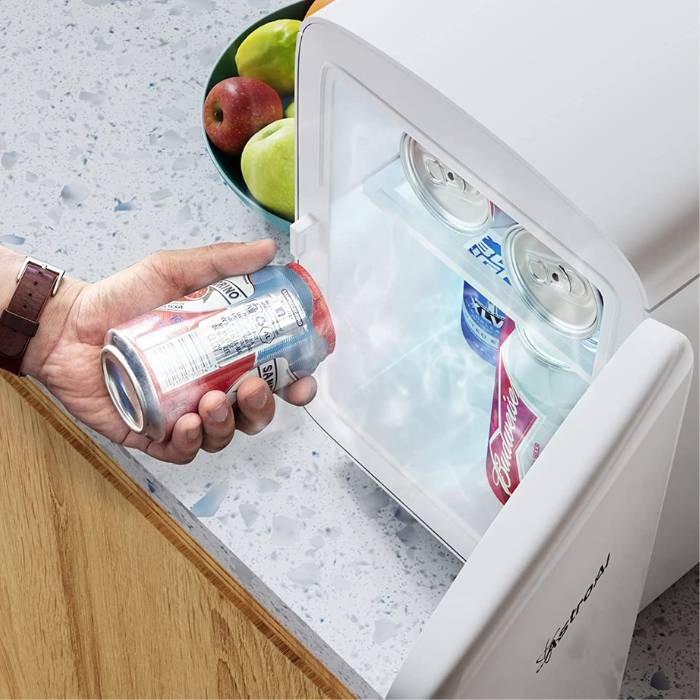
We hope this guide helps you understand how mini fridges work and the pros & cons of each type. With this knowledge, you can make an informed decision about which type of mini fridge is best for you.
Happy cooling!
Catchy Finds




